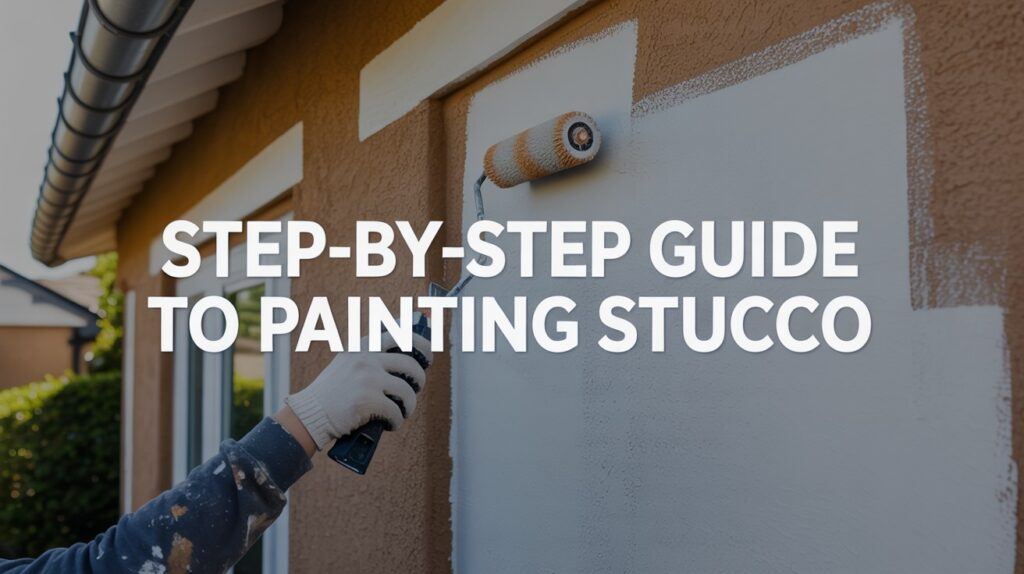Stucco stands as one of the most durable and attractive exterior surfaces for homes, offering excellent weather resistance and timeless appeal.
However, its textured, porous nature presents unique challenges that differ significantly from painting other exterior materials.
The irregular surface and absorption characteristics of stucco demand specialized preparation techniques and carefully selected products to ensure optimal results.
Success with stucco painting requires understanding proper surface preparation, choosing appropriate primers and paints, and applying correct techniques that accommodate the material’s distinctive properties.
Without these considerations, paint may fail prematurely, leading to peeling, cracking, or uneven coverage.
This comprehensive guide will walk you through each essential step to achieve a long-lasting, professional-looking finish that protects your home while improving its curb appeal for years to come.
Understanding Stucco: Traditional vs. Synthetic
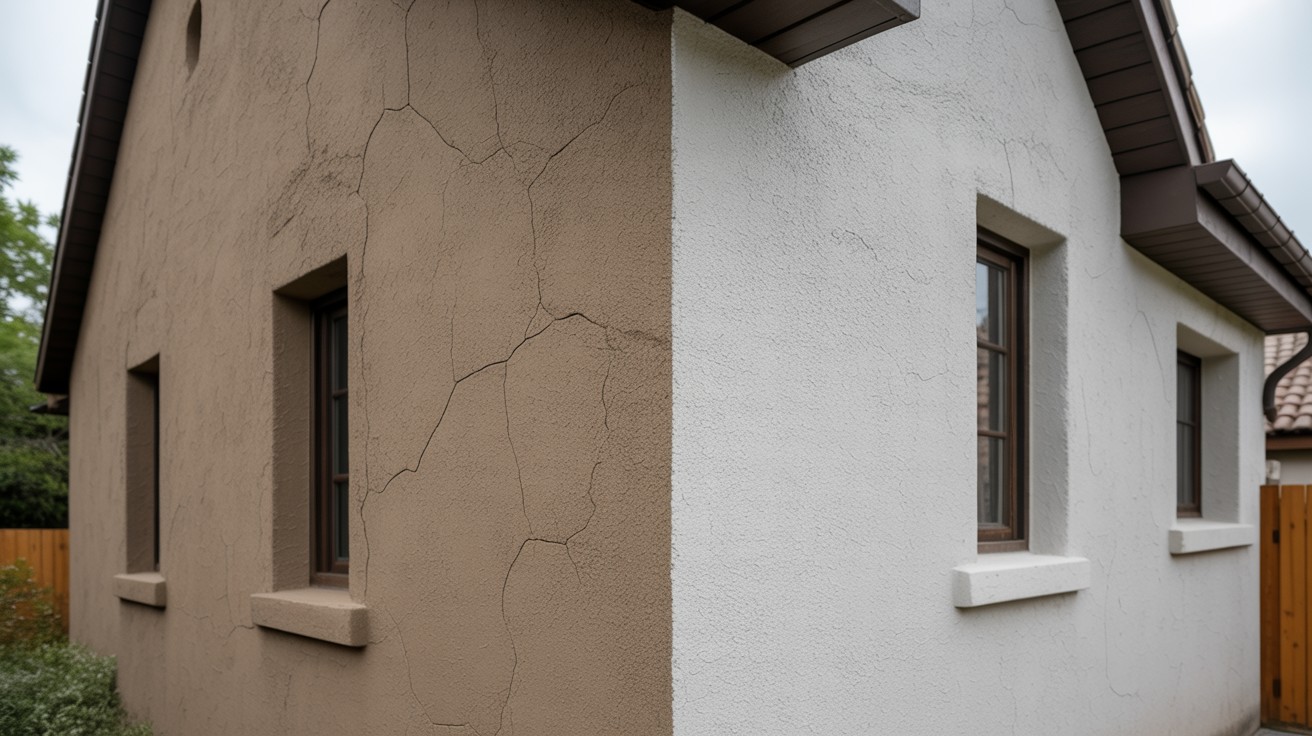
Knowing your stucco type is crucial for selecting the right painting approach and materials.
Traditional Stucco
Traditional stucco consists of a time-tested mixture of cement, sand, limestone, and water that creates a hard, mineral-based surface.
This classic composition provides exceptional durability and can withstand harsh weather conditions for decades when properly maintained.
However, traditional stucco has inherent weaknesses that affect painting projects. The rigid nature of the material makes it prone to developing hairline cracks over time due to settling, temperature fluctuations, and moisture cycles.
Additionally, the porous surface tends to absorb moisture and UV rays, leading to gradual color fading that makes repainting necessary every few years to maintain appearance.
Synthetic Stucco (EIFS)
Synthetic stucco, officially known as Exterior Insulation Finishing System, represents a modern alternative to traditional cement-based applications.
This system features a softer, more flexible surface that better accommodates building movement and thermal expansion.
EIFS typically maintains its color longer than traditional stucco due to advanced pigment technology and protective additives built into the material.
However, synthetic stucco presents different challenges for painters. The system’s design makes it particularly susceptible to moisture damage if water penetrates the surface, potentially leading to serious structural issues including mold growth and substrate deterioration that requires professional remediation.
Essential Tools and Materials
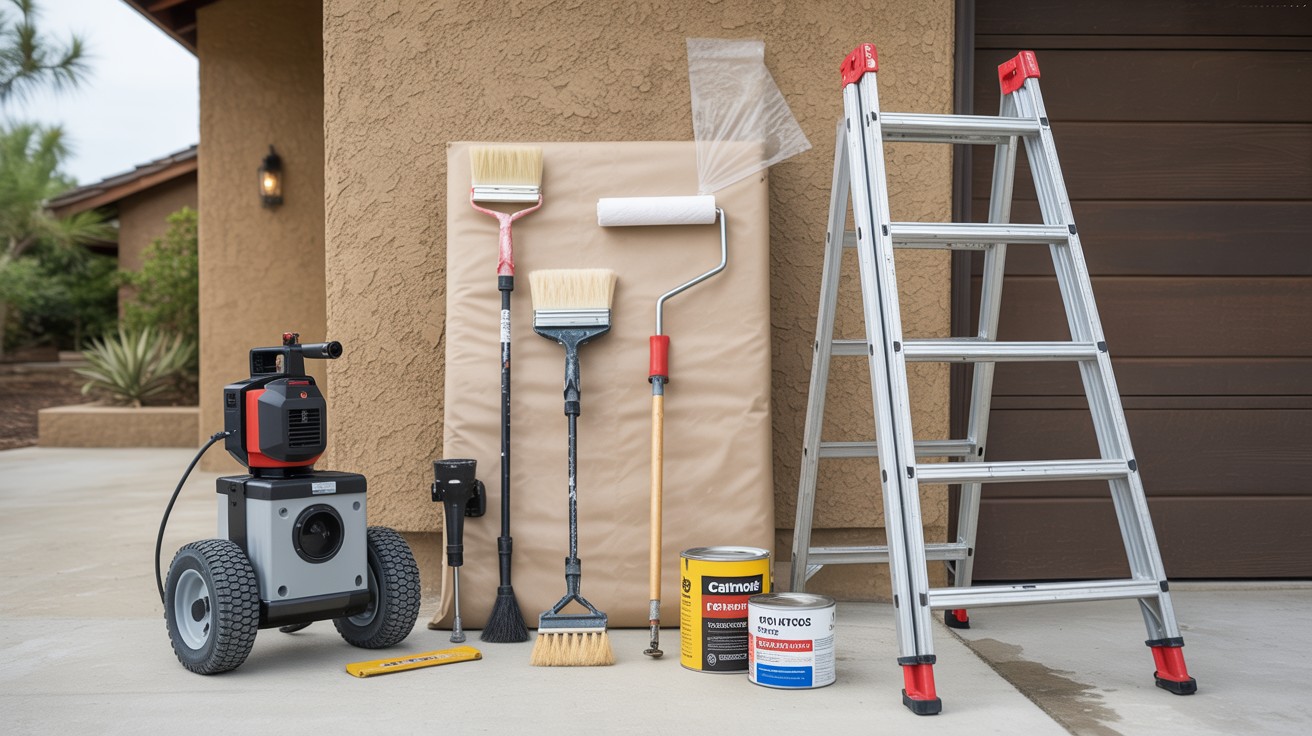
Having the right equipment ensures efficient work and professional results on textured stucco surfaces.
Tools You’ll Need
- Pressure washer: Essential for cleaning stucco surfaces and removing dirt, mildew, and loose material that could prevent proper paint adhesion
- Brushes and rollers: Select nap thickness that matches your stucco’s texture depth, with deeper textures requiring thicker naps for complete coverage
- Paint sprayer (optional): Provides faster coverage and better penetration into textured areas than traditional rolling methods for large surfaces
- Ladder or scaffolding: Secure access equipment crucial for safely reaching all wall areas while maintaining proper working angles
- Drop cloths and painter’s tape: Quality drop cloths protect landscaping and walkways from splatter, while tape creates clean lines around architectural details
- Additional supplies: Wire brushes for spot cleaning, caulk and patching compound for repairs, and plastic sheeting to protect plants and furniture
Step-by-Step: How to Paint Stucco
Follow this systematic approach to achieve professional results on your stucco exterior.
Step 1: Clean the Stucco Surface
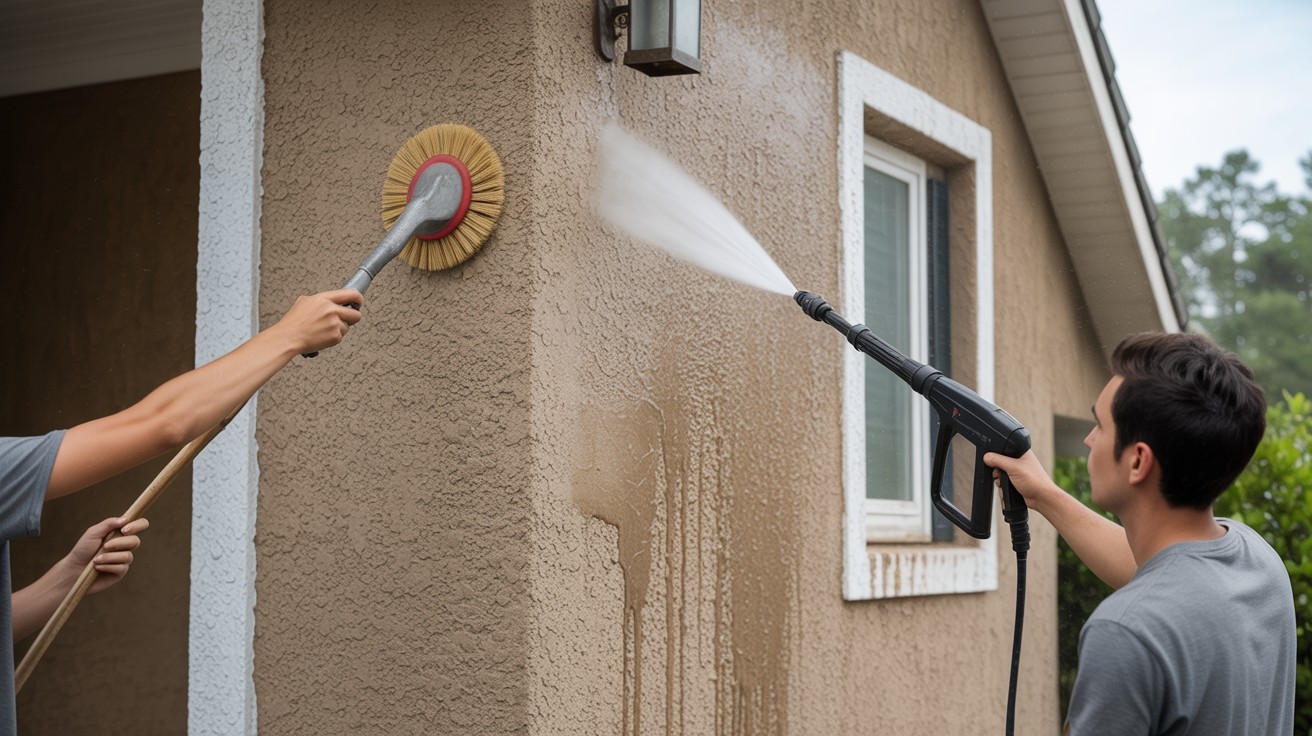
Begin your project by using a soft-bristle brush to loosen accumulated dirt, dust, and debris from the textured surface.
Follow this initial cleaning with thorough pressure washing, working from top to bottom to ensure complete removal of all contaminants that could interfere with paint adhesion.
Pay special attention to areas showing signs of mildew or mold growth, treating these spots with a specialty cleaner designed for exterior surfaces.
Allow the entire stucco surface to dry completely, typically 24-48 hours depending on weather conditions, before proceeding to the next step.
Step 2: Repair Cracks and Damaged Areas
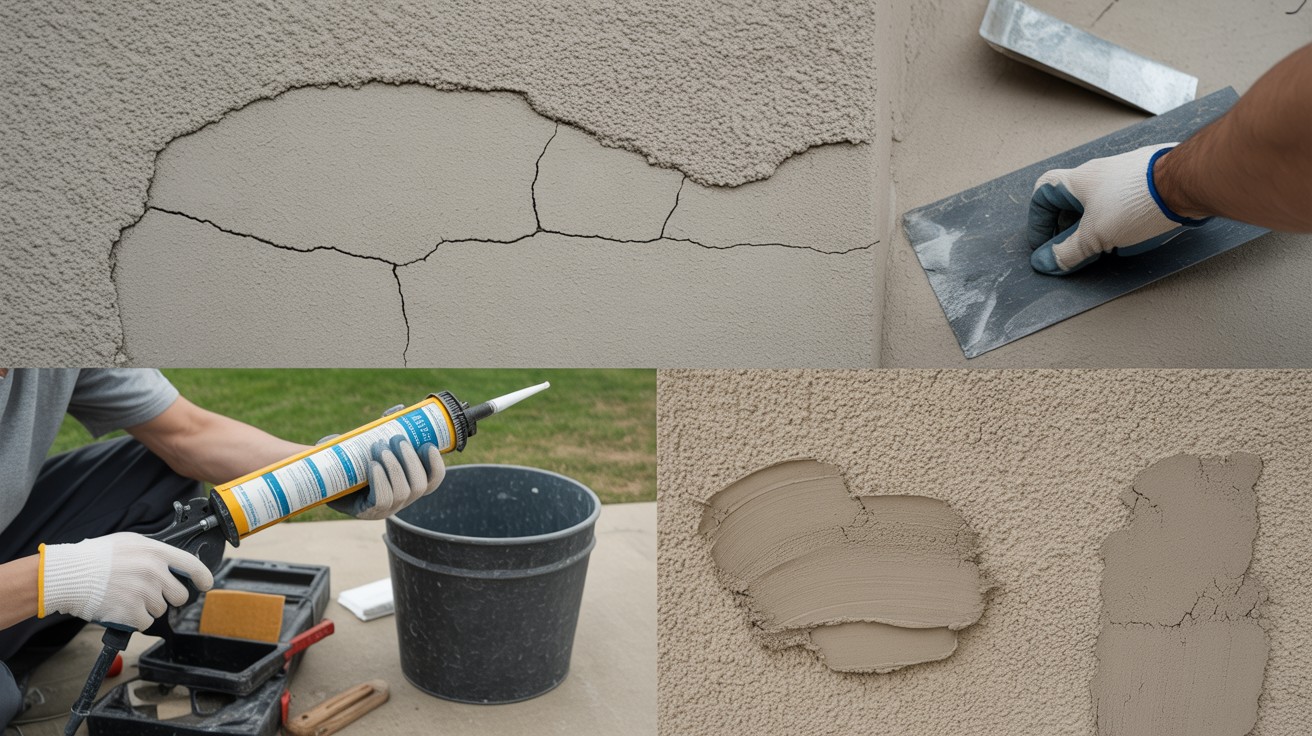
Conduct a comprehensive inspection of your stucco surface, looking for cracks, holes, or areas where the material has chipped or deteriorated.
Address small hairline cracks using high-quality acrylic caulk that remains flexible after curing, while larger damaged areas require specialized patching kits designed to match your stucco’s texture and composition.
Allow all repairs to cure properly for 7-10 days before applying any primer or paint, as rushing this process can lead to failure of both the repair and subsequent paint application.
Step 3: Apply Primer
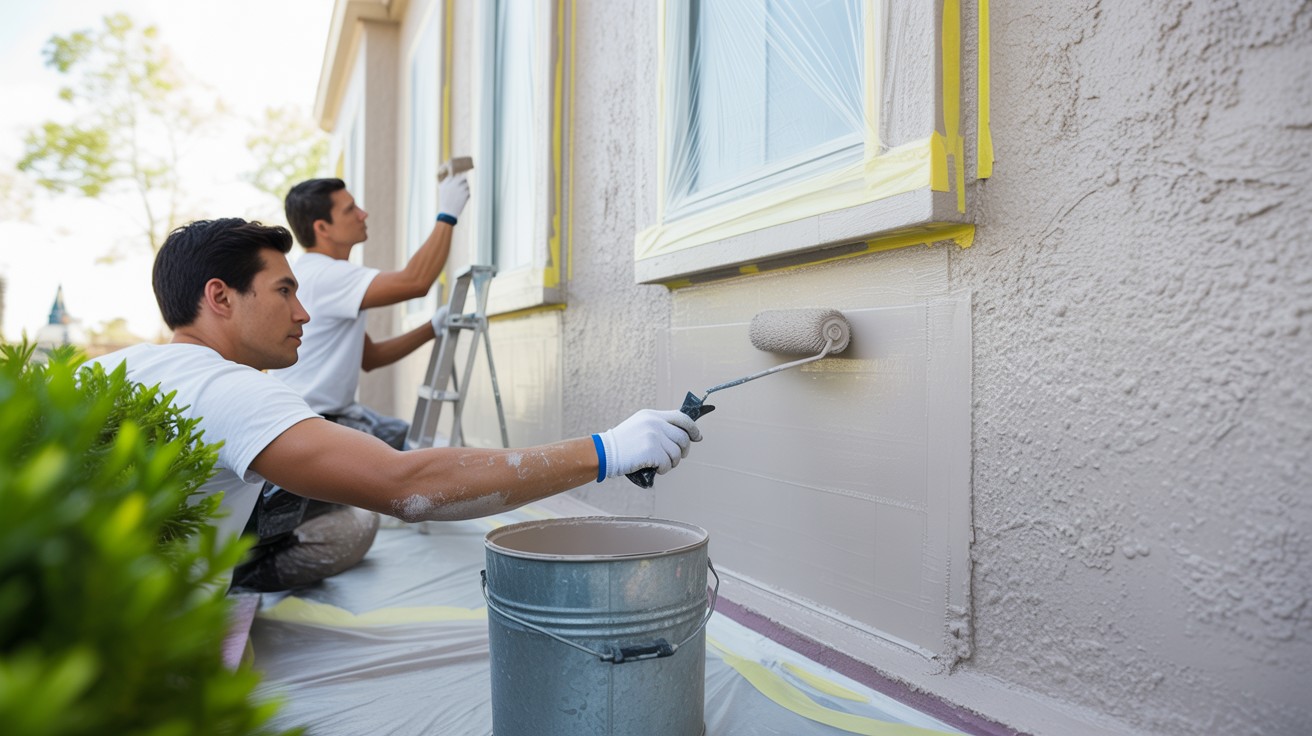
Before beginning primer application, carefully tape off all doors, windows, trim, and protect nearby landscaping with drop cloths or plastic sheeting.
Select a masonry primer specifically formulated for stucco surfaces, with 100% acrylic formulations being preferred for their superior adhesion and flexibility.
Begin by cutting in all edges and detail areas with a high-quality brush, then apply primer evenly across the main surface using either a roller with appropriate nap thickness or a paint sprayer for larger areas.
Step 4: Paint the Stucco
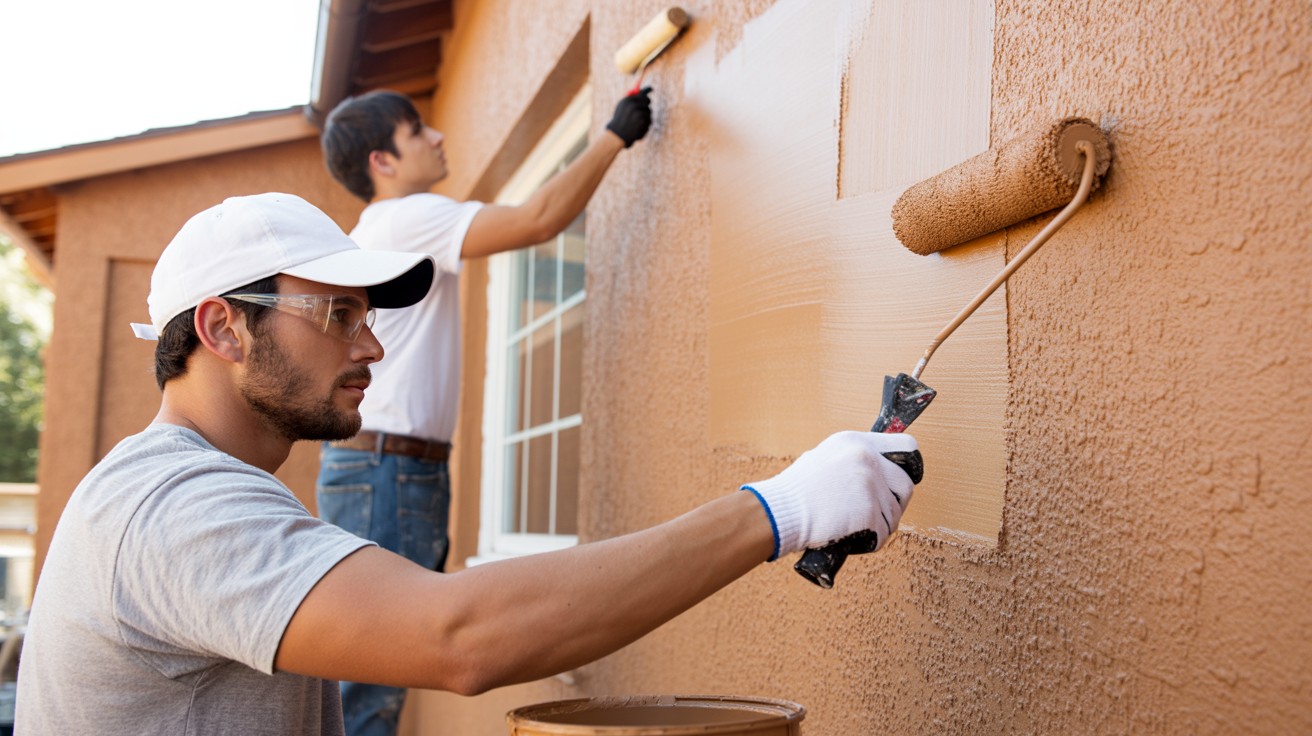
Apply your chosen exterior paint using a brush, roller, or sprayer, depending on your surface area and personal preference.
If using a sprayer, immediately back-roll or back-brush the applied paint to ensure even coverage and proper penetration into the textured surface.
Flat sheen paint works best for stucco as it effectively hides surface imperfections and provides a uniform appearance.
Plan to use significantly more paint than you would for smooth surfaces, as stucco typically absorbs 30-50% more material due to its porous, textured nature.
Step 5: Let Dry and Apply a Second Coat
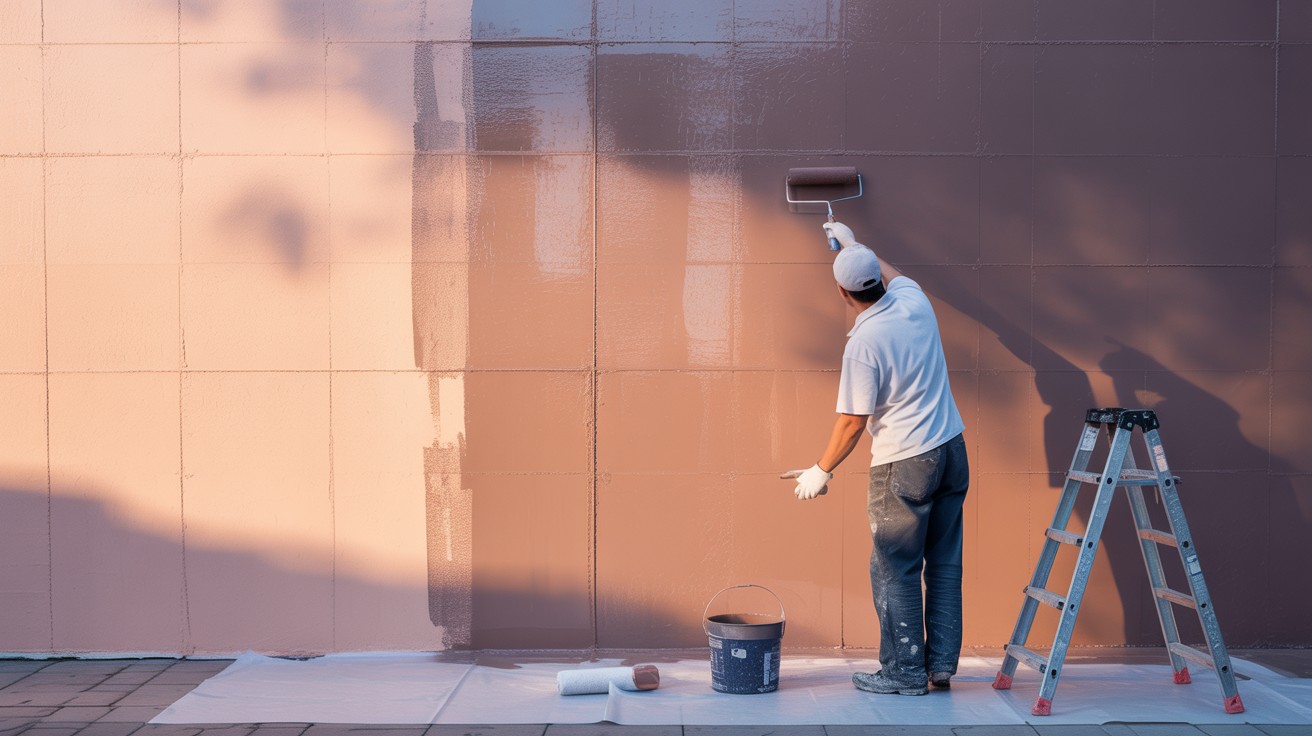
Allow your first coat to dry completely according to the manufacturer’s specifications, which may take longer on textured surfaces due to increased paint thickness in crevices.
Apply the second coat using the same method and technique as your first application, ensuring consistent coverage and color uniformity across the entire surface.
Allow the final coat to cure fully before exposing the painted surface to weather conditions or attempting any cleaning, typically requiring several days for complete hardening and maximum durability.
Pro Tips for Best Results
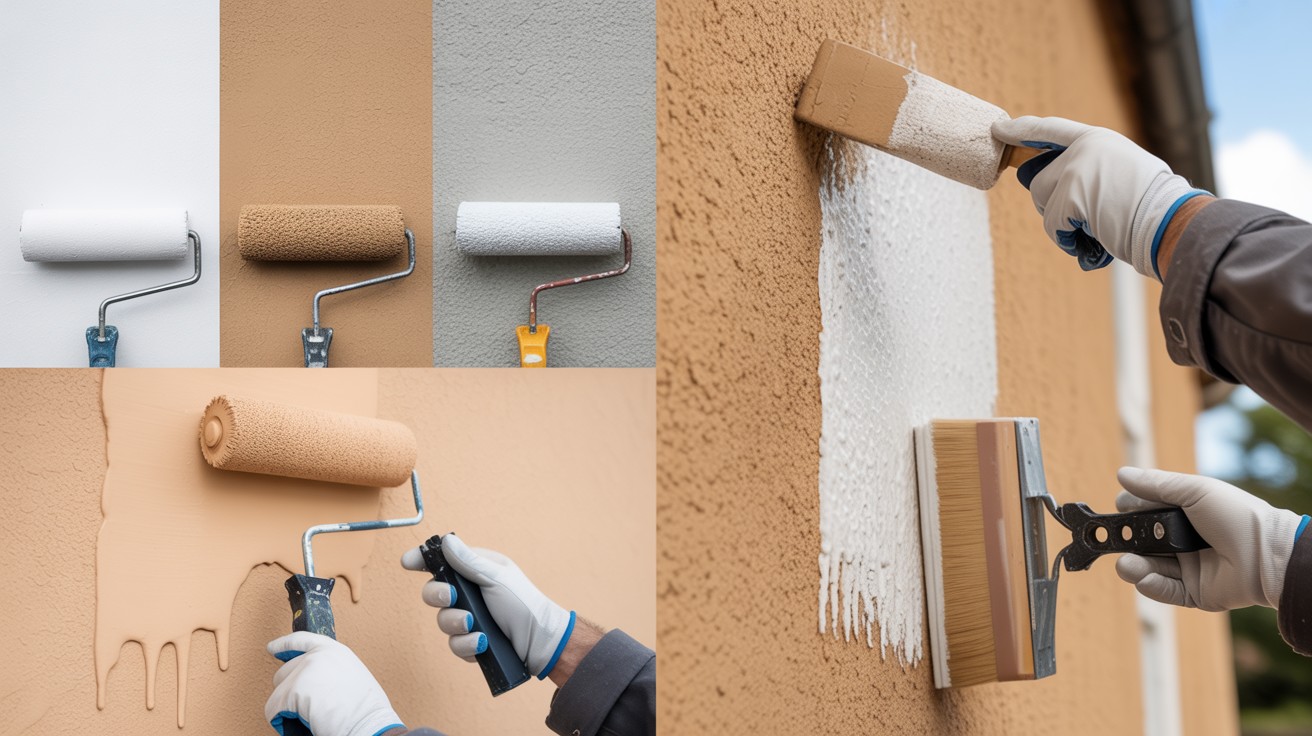
These expert recommendations will help you achieve maximum durability and professional appearance.
Match Paint to Texture
Selecting the correct roller nap thickness based on your specific stucco finish is critical for achieving uniform coverage and professional results.
Smooth stucco finishes work best with shorter nap rollers, typically 3/8 to 1/2 inch, which provide adequate coverage without excessive texture marking.
Medium-textured surfaces require 3/4 to 1-inch nap rollers to penetrate moderately deep crevices effectively.
Rough or heavily textured stucco demands the thickest available naps, usually 1 to 1.5 inches, to ensure paint reaches into all surface irregularities and provides complete protection.
Breathability Matters
Choose breathable or elastomeric paints specifically formulated for masonry surfaces to prevent moisture-related problems that can cause paint failure and structural damage.
These specialized coatings allow water vapor to escape from within the wall system while blocking liquid water penetration from outside.
Elastomeric paints offer additional benefits by stretching and contracting with temperature changes, helping prevent crack formation and maintaining a protective seal over time.
Don’t Skip Prep
Thorough surface preparation directly impacts both the durability and final appearance of your paint job, making it the most important factor in project success.
Proper cleaning removes contaminants that prevent adhesion, while careful crack repair ensures a uniform surface that won’t telegraph imperfections through the new coating.
Investing adequate time in preparation work pays significant dividends in longevity and professional appearance that will last for years.
Conclusion
Painting stucco can dramatically transform your home’s exterior appearance and protection when approached with proper knowledge and techniques.
Success depends heavily on understanding whether you’re working with traditional cement-based or synthetic EIFS stucco, as each requires specific preparation methods and product selections.
Thorough surface preparation, including comprehensive cleaning and crack repair, forms the foundation of any long-lasting paint job.
Investing in high-quality primers and paints designed specifically for masonry surfaces ensures optimal adhesion, durability, and weather resistance.
While this guide provides the essential steps for successful stucco painting, don’t hesitate to consult with professional contractors or knowledgeable staff at your local paint retailer when questions arise.
Their expertise can help you select the most appropriate products for your specific situation and climate conditions.
Frequently Asked Questions
What type of paint works best for stucco surfaces?
Use 100% acrylic exterior paint specifically formulated for masonry surfaces, as it provides superior adhesion and flexibility. Elastomeric paints offer additional benefits by stretching with temperature changes and providing enhanced moisture protection.
How long should I wait after pressure washing before painting stucco?
Allow the stucco to dry completely for 24-48 hours after pressure washing, depending on weather conditions and humidity levels. Painting over damp stucco can cause adhesion problems and premature paint failure.
Can I paint stucco without using primer first?
While some high-quality paints claim to be self-priming, using a dedicated masonry primer is strongly recommended for optimal results. Primer ensures better adhesion, color uniformity, and longer-lasting protection, especially on previously unpainted or repaired surfaces.
How much more paint does stucco require compared to smooth surfaces?
Stucco typically requires 30-50% more paint than smooth surfaces due to its porous, textured nature that absorbs more material. Plan accordingly when purchasing paint to avoid running short during your project and ensure color consistency.
What’s the best application method for painting stucco walls?
Spraying followed by back-rolling provides the most efficient coverage for large stucco surfaces, ensuring paint penetrates all texture crevices. For smaller areas or touch-ups, use high-quality brushes and thick-nap rollers that match your stucco’s texture depth.

